A strong content strategy is the backbone of any successful digital marketing effort. It ensures that your content is not only engaging but also drives traffic, builds trust, and converts leads into customers. Without a well-defined strategy, brands risk creating content that lacks direction, fails to reach the right audience, or does not contribute to business goals. This guide provides a step-by-step approach to crafting a content strategy that engages your audience and delivers measurable results.
Step 1: Define Your Goals
Every content strategy should start with clear, measurable objectives. Your goals will determine the type of content you create and how you distribute it. Common content marketing goals include:
- Increasing brand awareness
- Driving website traffic
- Generating leads and conversions
- Establishing thought leadership
- Improving customer engagement and retention
Setting SMART (Specific, Measurable, Achievable, Relevant, Time-bound) goals will help you track progress and adjust your strategy as needed.
Step 2: Identify Your Target Audience
Understanding your audience is crucial to crafting content that resonates with them. Conduct market research to create detailed buyer personas, including:
- Demographics (age, gender, location, income level)
- Interests and behaviors
- Pain points and challenges
- Preferred content formats and channels
By knowing your audience, you can tailor your content to their needs and increase engagement.
Step 3: Conduct a Content Audit
Before creating new content, evaluate your existing materials to identify gaps and opportunities. A content audit helps you determine what is performing well, what needs improvement, and what should be removed. Use tools like Google Analytics, SEMrush, or Ahrefs to analyze metrics such as page views, bounce rates, and conversion rates.
A content audit will help you repurpose high-performing content, refresh outdated information, and align your new content with business objectives.
Step 4: Research and Plan Your Content Topics
Once you understand your audience and content gaps, brainstorm topics that align with your brand’s expertise and audience interests. Use keyword research tools like Google Keyword Planner, Ubersuggest, or Ahrefs to identify high-ranking search terms.
Create a content calendar that includes:
- Topic ideas
- Target keywords
- Content format (blog, video, infographic, social media post)
- Publishing schedule
A structured content calendar ensures consistency and prevents last-minute scrambling for ideas.
Step 5: Choose the Right Content Formats
Different audiences prefer different content formats. Diversifying your content will help reach a wider audience and improve engagement. Consider incorporating:
- Blog posts for in-depth information and SEO benefits
- Videos for storytelling and product demonstrations
- Infographics for visual appeal and easy sharing
- Social media posts for quick engagement
- Email newsletters for personalized communication
Experiment with various formats and track performance to determine what works best for your audience.
Step 6: Optimize for SEO
Search engine optimization (SEO) plays a critical role in content discoverability. Implement these SEO best practices to increase your content’s visibility:
- Use relevant keywords naturally within titles, headers, and body text
- Optimize meta descriptions and alt text for images
- Structure content with proper heading tags (H1, H2, H3)
- Improve page speed and mobile responsiveness
- Build internal and external links to boost credibility
A well-optimized content piece is more likely to rank higher in search engine results and drive organic traffic.
Step 7: Publish and Promote Your Content
Creating great content is not enough; you need to distribute it effectively. Use multiple channels to maximize reach, such as:
- Social media platforms like LinkedIn, Facebook, Twitter, and Instagram
- Email marketing campaigns to nurture leads
- Influencer collaborations to expand visibility
- Paid advertising (Google Ads, social media ads) for targeted exposure
Engage with your audience by responding to comments, participating in discussions, and encouraging shares.
Step 8: Measure and Adjust Your Strategy
Regularly analyze content performance using tools like Google Analytics, Facebook Insights, and HubSpot. Track key performance indicators (KPIs) such as:
- Website traffic and engagement metrics
- Conversion rates and lead generation
- Social media shares and interactions
- Email open and click-through rates
Use this data to refine your strategy, eliminate underperforming tactics, and optimize high-performing content.
Table: Key Content Strategy Metrics
| Metric | Purpose | Tools to Track |
|---|---|---|
| Page Views | Measures content popularity | Google Analytics |
| Bounce Rate | Indicates engagement level | Google Analytics |
| Conversion Rate | Tracks goal completions | HubSpot, Google Analytics |
| Social Shares | Measures content reach | Facebook Insights, Twitter Analytics |
| Email Click-through Rate | Evaluates email engagement | Mailchimp, ConvertKit |
Conclusion
A well-planned content strategy ensures your brand remains relevant, engaging, and competitive in today’s digital landscape. By setting clear goals, understanding your audience, optimizing for SEO, and leveraging multiple content formats, you can create content that not only attracts but also converts.
If you need expert guidance in developing and executing a content strategy tailored to your brand’s needs, Crosfield Webhub is here to help. Contact us today to build a strategy that drives results and grows your business.





